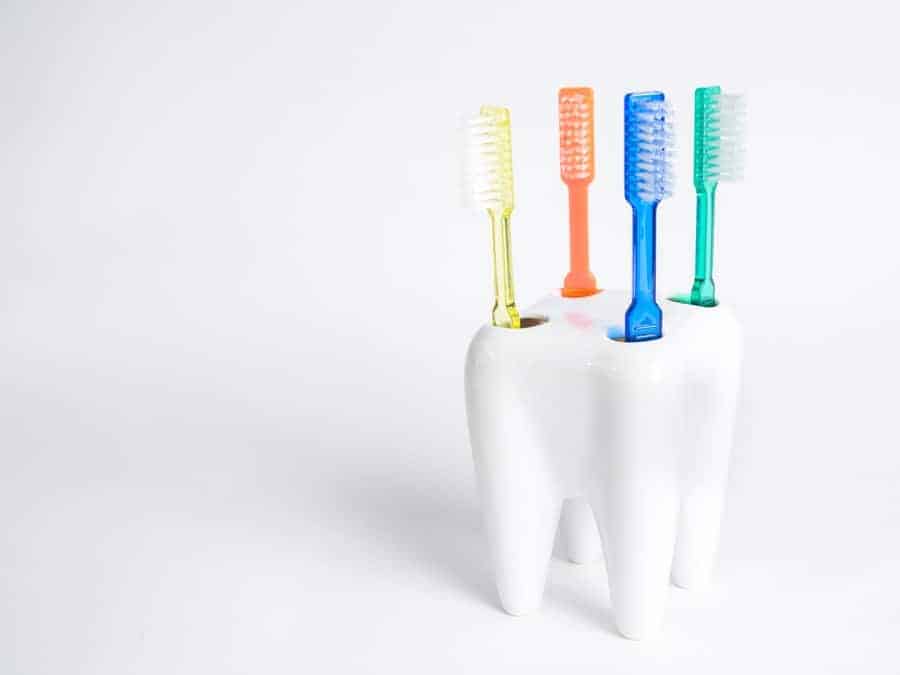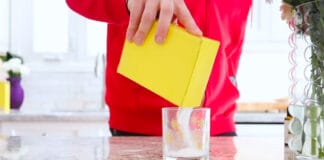Put down anything you might be eating or drinking to avoid serious gross-outs. Today we’re talking about the dirtiest spots in your home; you know those spots that are coated in grime that you might not have noticed, and those that harbor the most germs. Don’t worry, there’s a happy ending because I can tell you how to clean each one!
The Sides of Appliances
Think of it: When a spill at the stove sends a hot greasy mess into that crack between it and the adjoining countertop or a soda can explodes right by the fridge. We tend to have an “out of sight, out of mind” attitude to these sorts of spills. Although, if they were sitting out in plain view, they’d warrant an emergency clean-up, stat. Every once in a while, you should pull that appliance out, unplug it, and give its sides a good cleaning. This will help to avoid foul aromas, attracting pests, or any buildup of mold or stubborn sticky spots. (Brace yourself; you might find some mummified meat from that spilled stir-fry two months ago or something equally disgusting.)
Start by dabbing a degreaser onto any greasy spots and allow it to soak in for a few minutes. Then spray down the sides with an all-purpose cleaner and begin to wipe with a non-scratching sponge. For any stubborn spots that don’t seem to budge, flip to the scrubby side and gently agitate. Dry well with a clean cloth before plugging back in the appliance and sliding it back into place.

All the Pet Stuff!
We love our fur babies, but the truth is that their belongings can become literal hotbeds of bacteria, yeasts, and molds (including Staph). Pet items are some of the filthiest things in the home, so treat them that way. Start by washing feeding dishes daily in hot, soapy water. Then once a week run them through a sanitizing cycle in the dishwasher. Ya know like we do for people!
Fabric pet toys and pet beds should be laundered regularly. For best results, wash on the sanitizing cycle of your washing machine. (If your pet bed is not washable, get a new pet bed.) Hard toys should be washed in hot soapy water, then run through the dishwasher, if they are safe to do so. Pay attention to your upholstered furniture, too. Regularly vacuum using the upholstery attachment, in surfaces, in cracks, and underneath cushions, too. A few times a year, sprinkle baking soda all over your upholstery and let it sit for 30 minutes, then vacuum it up.
Bathroom Mats
Whether we’re talking the rubbery one on the floor of your tub or the terry one you step out onto after your shower, bathroom mats get dirty. The former, if left in place, will harbor mold and mildew. This will spread to your tub and tiles and make the whole bathroom smell dank. The latter is even filthier, especially if it gets stepped on with dirty feet, but also because it collects microscopic water droplets with each toilet flush—yecch squared. Luckily, all of the above can be laundered in the washing machine. Just use regular laundry detergent, but add a cup of white vinegar to the load, for its sanitizing and general de-stinkifying properties.

Points of Contact
The experts refer to those items that we touch with our hands “points of contact,” which include knobs and handles, light switches, railings, and even remote controls. In turn, they become veritable resort areas for bacteria. However, don’t fall into the trap of thinking you can swipe with a disinfecting wipe and be done with it. True disinfecting includes two steps: First, removing dirt and soil, and second, employing a product that kills germs. If you skip to #2 without doing #1, you’re leaving behind dirty spots that will make the germs multiply like crazy, so don’t be tempted.
For items like doorknobs, handles on cabinets and drawers, and the filthiest items—since we touch them with as-yet unwashed hands—the toilet flusher and sink handles, spray down with all-purpose cleaner and wipe with a clean cloth to remove soil (even that stuff you can’t see). Then, use a disinfectant in the manner described on the label’s instructions—thus, if it says to spray it on and leave it for 10 minutes, that’s how long it takes to actually work and kill germs. So don’t spray it and then wipe it down again. Let it actually sit for its full “dwell time” for maximum effect.
There are some items that can’t get sprayed or wet, like light switches. To clean these spray a cleaning cloth with all-purpose cleaner and wipe the switches all over, then repeat with the disinfectant. For the remote control, spray a cloth or cotton swab with an electronics cleaner (I like 1-to-1 water and rubbing alcohol) and swipe all over, especially anywhere you see visible grime. For the screen of a tablet or smartphone, which we touch a million times a day with our grimy mitts, I like to swipe regularly with a flat-weave microfiber cloth, which removes germs even without adding any product.
Coffee Machine Reservoir
This one is particularly disturbing, especially if you haven’t had your morning coffee yet or perhaps even more disturbing if you have. Turns out, the reservoirs and warm, moist areas of coffee machines make them ultra-hospitable to germs. Many of us just rinse them in between uses, since coffee isn’t dirty, right?
Well, luckily refreshing the coffee maker is simple. Whether we’re talking a pod model or a traditional drip pot, the first step is to take as many pieces apart as you can and wash them in hot, soapy water, or run them through the dishwasher. Then, take a clean cleaning toothbrush and gently scrub away any trapped grounds, mineral deposits, or staining. Use a damp cloth to remove any buildup. Then, run a brew cycle, empty of any pods or grounds, using only white vinegar. Dump the vinegar and run several more cycles using just water. Do this as many times as it takes to get rid of the vinegar smell.
Toothbrush Holders
We often overlook the toothbrush holders, but they can harbor quite a few germs. They hold the toothbrushes that visit our mouths twice a day and often live in close proximity to the toilet. Give these a regular cleaning. If they are removable, give them a good scrub with hot, soapy water, then run them through the dishwasher. If not, spray them down well with an all-purpose cleaner and let sit for a few minutes. Wipe clean with a clean cloth. If there is gunk that needs extra abrasion to remove, sprinkle on some baking soda and scrub with a cleaning toothbrush. Rinse well.
The Dish Sponge
Many studies show that the A-number-1 germiest spot in the home is the dish sponge or dish rag. This is ironic since we use it to clean up. But there’s a quick fix for this too. At the end of every day, when you’ve finished cleaning up, rinse the sponge well to get out all traces of soap. Wring as dry as you can, then microwave the sponge for 3 minutes. Let it sit for a few minutes before removing it—that sucker will be hot! But it will be clean and sanitized and ready to go for the next day.
Looking for a BETTER & EASIER Way to Clean Your Home?
Cleaning Expert Melissa Maker is here to help with her game-changing 3 Wave Cleaning System that will help you clean your house faster and easier than you ever thought possible!



















kitchen cleaning is the most difficult cleaning in my opinion.
Would you please give us the recipe or brand name of the best product to us to clean up grease in and around the stove and oven? It is always a mess and I never seem to be able to get it super clean.
I love your list! I try to do a lot of the things on this list too, like wipe down the bathrooms and kitchen counters, and I feel so much more organized and clean because of it. It’s a rare person among us who looks forward to cleaning the house, and a clean house is something I enjoy perhaps too much.
I never thought to check the coffee maker! 🙁
Looks like I have an unpleasant, but necessary job to do tomorrow morning. Thanks for the tips!
…speaking of bathroom mats… Several years back we saw a show where they had placed a special chemical in the toilet and then flushed it. They went back into the bathroom after a minute or two with a black light and you could see where all the “nastiness” had floated through the air and everything it had landed on – the walls, floor, counter, sink, toothbrush holder (gross AND disgusting!). After that we started closing the toilet lid BEFORE we flush EVERY TIME we flush. It confines that fine “flush mist” to the bowl. (As an extra precaution, we’ve moved our toothbrushes – mine went into a drawer and my husband keeps his in the medicine cabinet!) 😀
I was thinking about this the other day and I think one place we don’t think of it the toilet flusher. This little lever gets touched with the most germ infested hand. ????
can you also microwave your dishrag, as you would a sponge?
Would like to know the easiest way to clean marble floors .Have a lot of marble on these floors it is a very big room.
All of our bathrooms have marble too. The only thing they are supposed to be cleaned with is water, and I’ve found the Norwex mop to be the best solution! They are sold by consultants, like Tupperware, etc but I don’t sell them. Look them up!!
I clean my marble and granite with isopropyl rubbing alcohol, then re-seal OFTEN !
Melissa- thanks for explaining about “dwell time”. I’m an Infection Control Practitioner and this is something we teach everyone in the hospital.